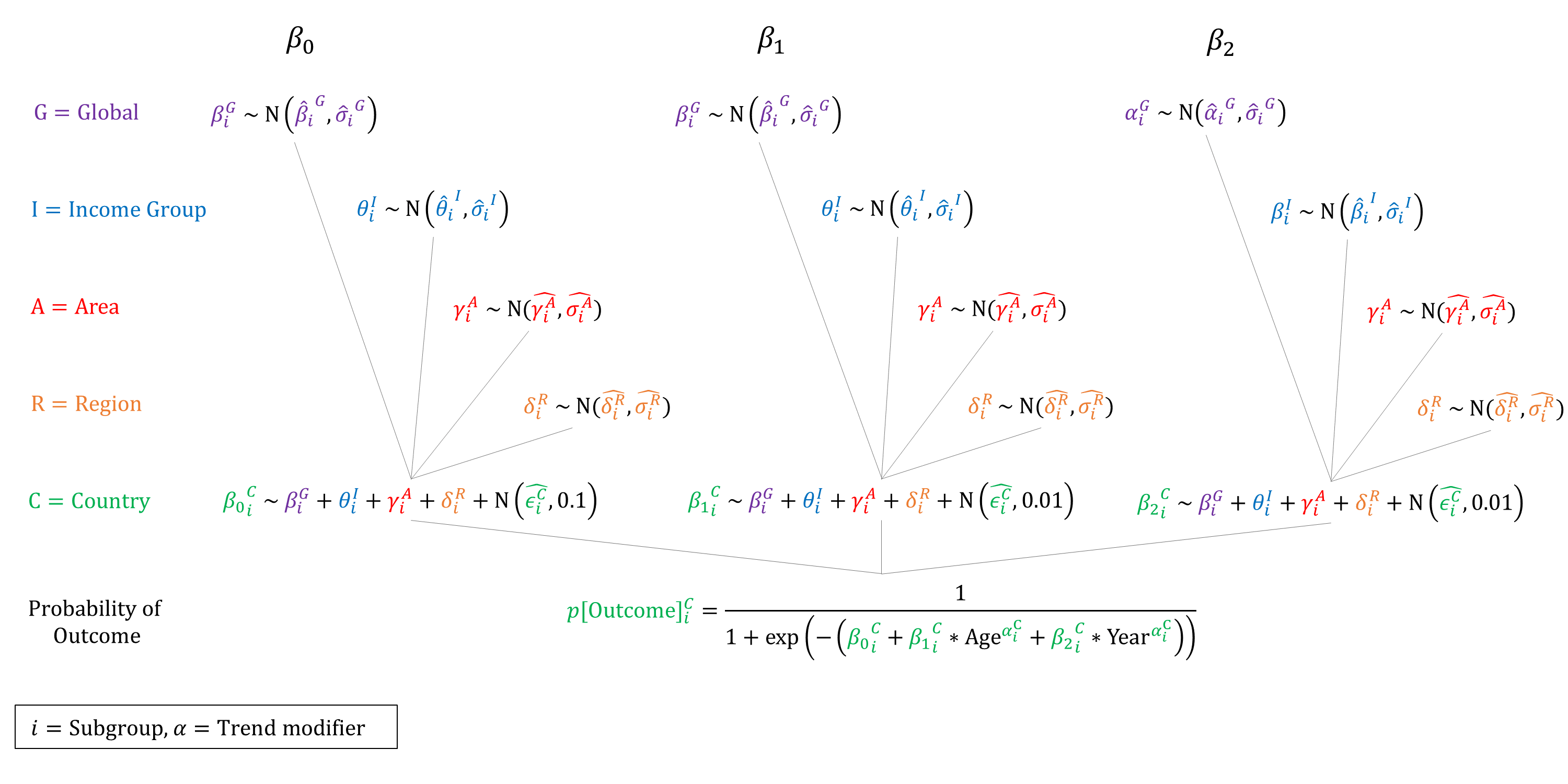Unmet Need
Model Inputs \(\rightarrow\) Family Planning Parameters \(\rightarrow\) Unmet need
Overview
Unmet need for family planning is defined as “women who do not want to become pregnant but are not using contraception”.[1] We model unmet need for ‘spacing’ for women who have not met their desired family size yet, and unmet need for ‘limiting’ for women who do not want to have any more children.
Data
We used DHS data (variable v626) to estimate trends in unmet need by age and year among women who were sexually active and pre-menopausal. Data were available for 2,644,156 women from 254 surveys in 74 countries. Some women do not have any need for contraception because they desire pregnancy soon (v626==7). These women are excluded from our unmet need calculations, and unmet need for spacing (v626==1) is then calculated among the remaining women. Total spacing is comprised of women who responded: “Unmet need to space” (v626==1), “Using to space” (v626==3), “Spacing failure” (v626==5), and “Desire birth” (v626==7). Unmet need for limiting (v626==2) is more straightforward, and is calculated among the total limiting population: “Unmet need to limit” (v626==2), “Using to limit” (v626==4), and “Limiting failure” (v626==6).
Parameters
We estimated hierarchical logistic regression models for each outcome (desired birth, unmet need for spacing, and unmet need for limiting) by subgroup (urban/rural and education level). We used upper middle income priors for high income countries due to lack of DHS data in high income countries.

Priors
Model Implementation
Because unmet need tends to decrease with age, women who experience unmet need are checked annually in the model to simulate whether their need becomes met.
References
- Demographic and Health Survey Documentation. Unmet need. Available: http://dhsprogram.com/topics/Unmet-Need.cfm.
GMatH (Global Maternal Health) Model - Last updated: 28 November 2022
© Copyright 2020-2022 Zachary J. Ward
zward@hsph.harvard.edu